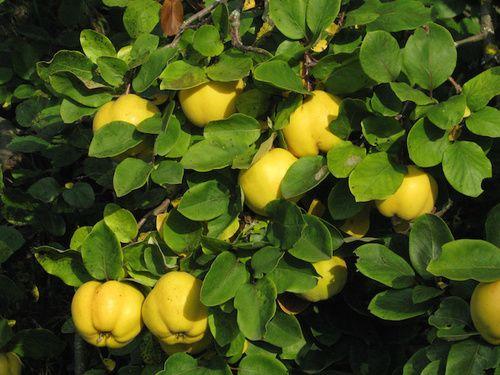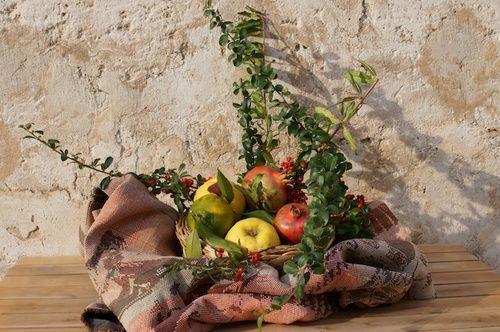The quince it is a typically autumn fruit, often unjustly forgotten. It is, in fact, not very present on our tables in spite of the many nutritional properties. Rpectin icca, quince promotes blood sugar control and is perfect for making jams. Let's find out better.
> 1. Description of the quince
> 2. Properties and benefits of quince
> 3. Calories and nutritional values of quince
> 4. Ally of
> 6. A recipe with quince

Quince description
La Quince belongs to the pome fruit group, the same as apple and pear. Originally from Asia, currently it is grown a little in all our regions but it is not particularly widespread.
Depending on the variety, quinces can be pear-shaped or maliform. In any case, it comes to very fragrant fruits which, when ripe, take on a yellow color.
Properties and benefits of quince
The main quality of quince is the richness of pectin, a soluble dietary fiber with gelatinizing, stabilizing and thickening properties. Thanks to these characteristics, pectin favors the control of blood sugar and cholesterol levels, consequently the quince can be considered a valid aid in the prevention of cardiovascular diseases.
Again thanks to the high pectin content, quinces promote intestinal motility and are an excellent natural remedy for constipation. They have anti-inflammatory qualities on the intestines and stomach and contain malic acid, a substance that aids digestion.
Finally, the quince is rich in minerals, especially potassium.
Calories and nutritional values of quince
100 grams of quince contain approx 57 calories.
Furthermore, always for 100 grams of product, we have approximately:
- Water: 83,8 g
- Carbohydrates: 15,3 g
- Fiber: 1,9 g
- Protein: 0,4 g
- Fats: 0,1
- Calcium: 11 mg
- Potassium: 197 mg
- Phosphorus: 17 mg
- Iron: 0,7 mg
- Magnesium: 8 mg
Ally of
Quince is a great one ally of the intestine and, more generally, of the entire digestive system. It is also a great friend of cardiovascular health.
Quince among the forgotten fruits of autumn: discover the others

Curiosities about quince
Quince was known in the country as early as Roman times. Although our climate would allow its cultivation throughout (or almost) our peninsula, it is found above all in Puglia, Campania and Sicily.
It is not easily available in large-scale distribution and to purchase it you often have to go directly to farmers or small distributors.
Quinces are usually consumed after cooking them. Raw, in fact, they are not particularly pleasant as they are hard, fibrous and difficult to bite. If you really want to eat them raw, it is advisable to wait a few days after harvesting for them to reach complete maturity.
A recipe up your sleeve
Quinces are mainly used to make jellies and jams. You can also get an excellent liqueur.
One idea to make them appetizing and include them in your autumn diet is to make them the main ingredient in cakes and pies. Unlike other fruits that can be added raw to the dough, quince apples must be pre-cooked precisely because of the characteristic hardness of the pulp. Just cut them into small pieces and let them boil for 15/20 minutes in water, preferably flavored with a cinnamon stick and sweetened with a tablespoon of brown sugar. After having pre-cooked the quinces in this way you can add them to your recipes, in pieces or blend as in cake with quince and chocolate which is proposed below.
Ingredients
- Three rather large quinces
- A stick of cinnamon
- 100 g of dark chocolate
- 50 g of butter
- 80 grams of whole cane sugar (in addition to what is needed for the pre-cooking of quinces)
- 200 g of 00 flour
- 3 eggs
- A sachet of baking powder
- Two or three tablespoons of granulated sugar
Method: after having cooked the quinces as described above, blend them together with a couple of tablespoons of the cooking water. Melt the chocolate in a double boiler, together with the butter. Work the eggs, sugar and quince puree with a whisk; then add the melted chocolate with the butter and, little by little, the flour. The mixture must be soft and homogeneous, if it is not, add a few tablespoons of the quince cooking water and continue to work with the mixer. Finally, add the yeast. Pour the mixture into a hinged mold, previously buttered and floured, garnish the surface with the granulated sugar and bake for about 40 minutes in the oven at 180 degrees.
The 5 uses of quince
Quince, cooked or raw?
| Wikimedia


























